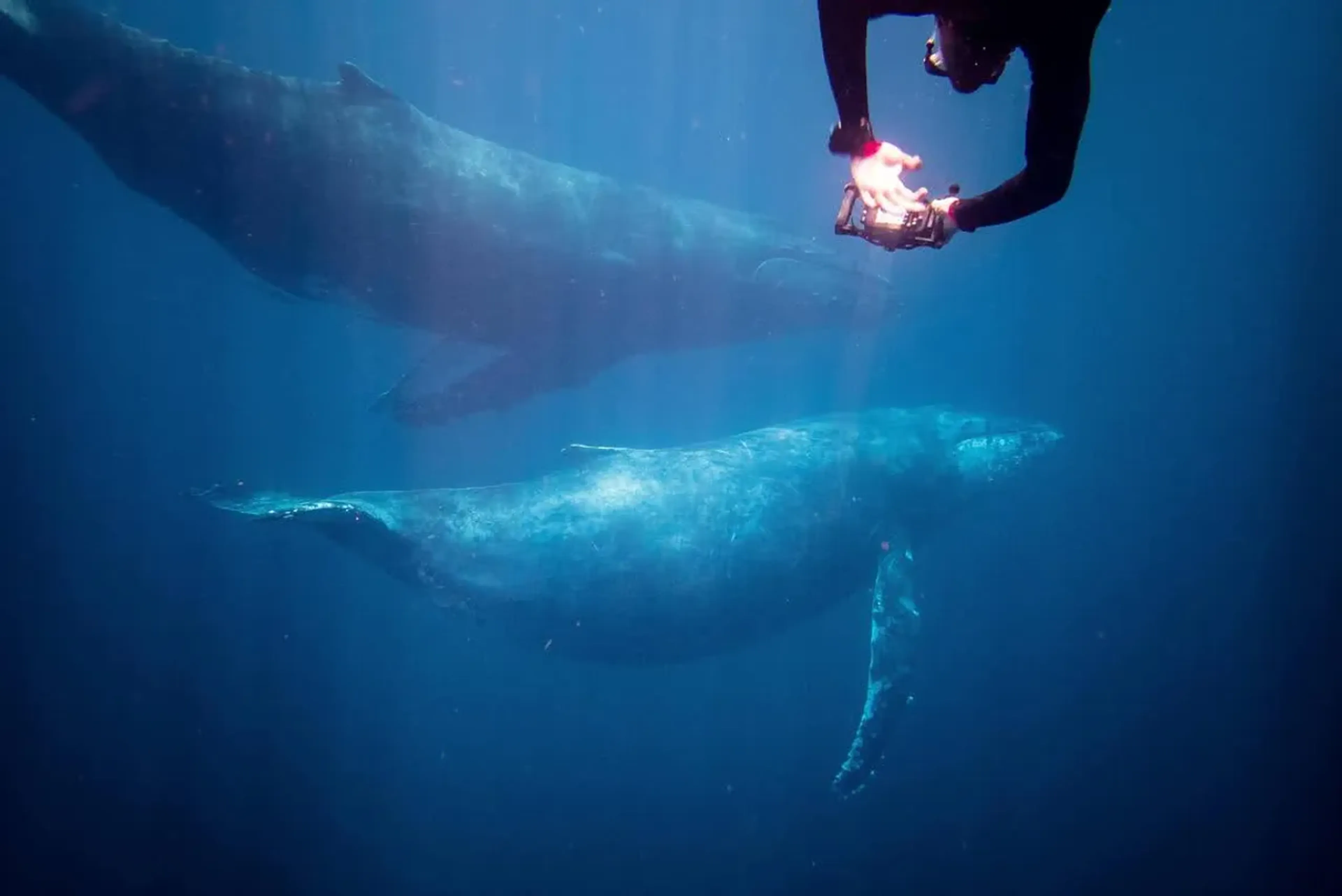Isabelle Barbier
• 3 min read
Seeing humpback whales is a dream of many: they have amazing shapes, their songs are captivating and they are gentle with each other. While most of the world's humpback whale populations is no longer endangered, you will have better chance to see them if you go in the peak season of their favorite mating and calving grounds.
Humpback whales are migratory animals. During the polar summer, they feed on plankton and small fish in Alaska or in Antartica. When the temperatures begin to decrease, they move to tropical seas to mate and breed.
Humpback whales choose shallow waters to protect calves from the main predators of baby whales, orcas and big sharks, as well as increasing their survival rate in the warmer environmental conditions.
While adult measure 15 to 18 meters, calves measure at birth 4,5 meters. They can grow of 100 kg per day during their first week of life. Calves need to breathe every three to five minutes and both the mother and the calf swim at the surface.
Sometimes, underwater bubbles can be perceived as an aggression signal so it is preferred to snorkel with them and stay at the surface.
February - March
Hawaii
Every year, the whales make a 5,600 km journey from Alaska to Maui, one of their favorite mating and calving grounds. It is estimated that 10 000 of them migrate to the shallow waters of the island.
Mexico Embark on a liveaboard to the island of Socorro, west of Mexico. You will dive on the Revillagigado archipelago, famous for its curious oceanic mantas. It is one of the few destinations where you could dive and see humpback whales.
July - August
Madagascar
In 2015 and 2016, less humpback whales have been spotted, as the water temperature was 2° (36°F) above average. They are back since 2017. Scientists estimate nearly a thousand whales visit Madagascar each season. To see them, go either to Sainte-Marie or Nosy Be island.
Panama A good place to see them is in the marine park of Coiba island, in the Pacific Ocean. It has been estimated in 2015 by the National Oceanic and Atmospheric Administration (NOAA) that 500 humpback whales migrate through central America.
August - September
Mozambique
Ponta do Ouro and Tofo in Mozambique are also two favorites to spot humpback whales as they swim past the east African coastline. You may also spot southern right whales, whale sharks and oceanic mantas.
To see them, go with a dive shop in Ponta do Ouro, or join a snorkeling tour to spot humpback whales in Tofo.
Tonga
Tonga is a favorite of humpback whales from August to mid-September. If you are lucky you could hear male humpbacks “sing” to attract females. They do so by forcing air through their massive nasal cavities. You can snorkel with them or if you're lucky, see them while diving.
September - October
French Polynesia
Since 2002, French Polynesia has protected an area of 5 million km2, the second largest in the world. They migrate from Antartica to the warm waters of Moorea and Rurutu between June and early December, but September and October is when you'll have greater chances to see them.
After seeing them, fly to the Tuamotus atolls that host some of the best dive destinations in the world, and dive in Fakarava, and in Rangiroa's Tiputa pass, made famous by Jacques Cousteau.
Header image: courtesy of Julien Hilt


